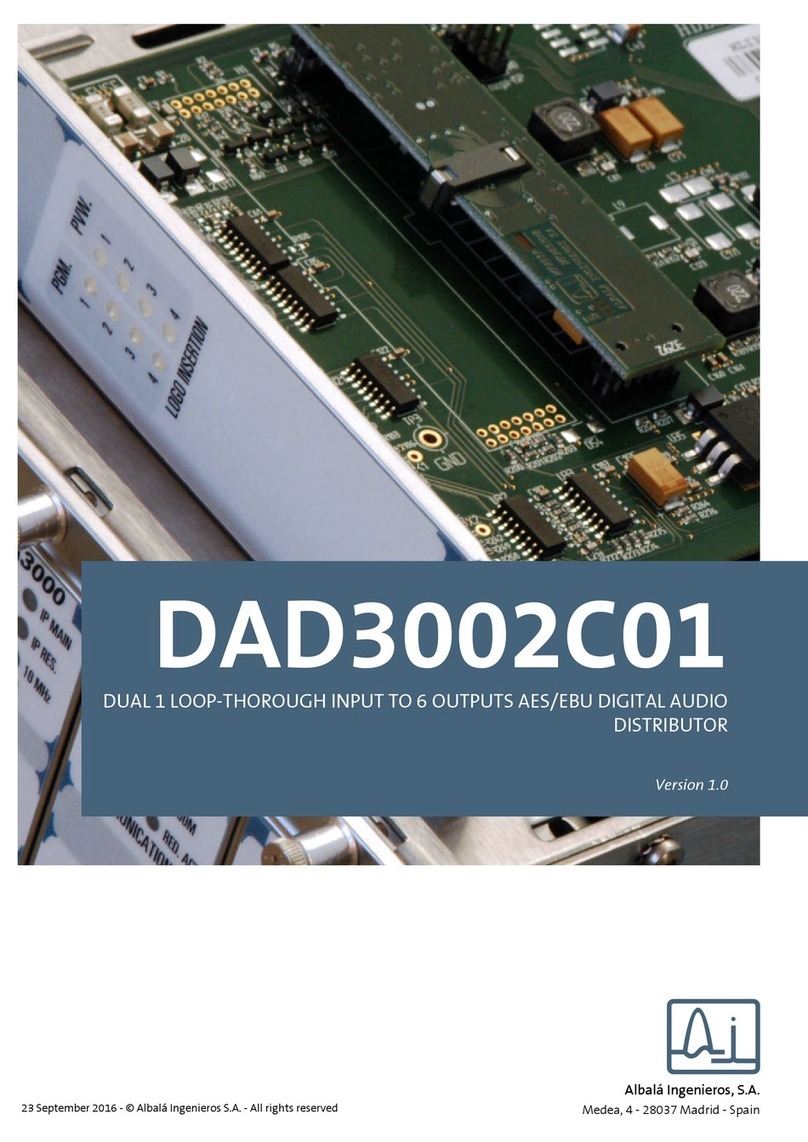
SEM2000C01
SYNCHRONOUS ETHERNET MASTER GENERTOR
Version 1.0
1. DESCRIPTION ...................................................................................................................... 5
1.1. The SEM2000C01 ........................................................................................................................... 5
1.2. Features ............................................................................................................................................. 6
1.3. Block diagram .................................................................................................................................. 7
2. SPECIFICATIONS ................................................................................................................. 9
3. INSTALLATION .................................................................................................................. 11
3.1. Initial inspection .......................................................................................................................... 11
3.2. Safety instructions ...................................................................................................................... 11
3.3. Environmental considerations ................................................................................................ 12
3.4. Installation of SFP/SFP+ modules .......................................................................................... 12
3.5. Installing the module in the mounting frame ................................................................... 13
3.6. Interconnection ............................................................................................................................ 13
3.6.1. Connecting to the electrical ports ................................................................................. 14
3.6.2. Connecting to the optical port ....................................................................................... 14
4. OPERATION ...................................................................................................................... 15
4.1. Front panel description .............................................................................................................. 15
4.2. Functional description ............................................................................................................... 15
4.3. Module remote control and supervision ............................................................................. 17
4.3.1. Details of the SEM2000C01 registers .......................................................................... 18
5. GLOSSARY ........................................................................................................................ 21
6. REGULATIONS .................................................................................................................. 23
7. VERSIONS ......................................................................................................................... 25




























